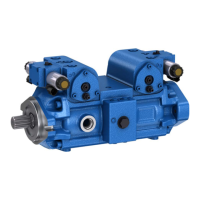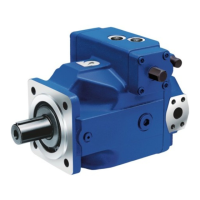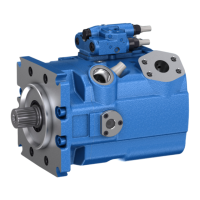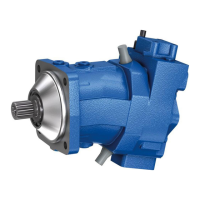BoschRexrothAG, RE 91485-01-B/2021-11-18
10/72 A10FZO, A10VZO, A10FZG and A10VZG series 10 | Safety instructions
2�5 General safety instructions
• Observe the country-specific accident prevention and environmental protection
regulations.
• Observe the safety regulations of the country in which the product is used/
operated.
• Use Rexroth products only when they are in good working order.
• Observe all notices on the product.
• Do not assemble, operate, remove or maintain Rexroth products if under the
influence of alcohol, drugs or medication that may affect your reaction time.
• Only use genuine Rexroth accessories and spare parts to ensure there is no
hazard to persons from unsuitable spare parts.
• Observe the technical data and ambient conditions specified in the product
documentation.
• If unsuitable products are installed or used in safety-relevant applications,
unexpected operating conditions may occur in the application, which could result
in personal injury or property damage. For this reason, only use the product in
safety-relevant applications if this use is expressly indicated and approved in the
product documentation, e. g.in explosion protection areas or in safety-related
parts of acontrol system (functional safety).
• Only commission the product if it has been determined that the end product
(e.g.machinery/system) in which the Rexroth products are installed complies
with the country-specific provisions, safety regulations and standards for the
application.
• Use tools appropriate for the work being performed and wear appropriate
protective clothing to prevent punctures and cuts (e.g.when removing protective
covers, disassembly).
• There is arisk of entanglement when operating the axial piston unit with
abare shaft end. Check whether or not your machine requires additional safety
measures for your application. If necessary, make sure these are appropriately
implemented.
• Depending on the type of control used, electromagnetic effects can be produced
when using solenoids. Applying adirect voltage signal (DC) to solenoids does not
create electromagnetic interference (EMI) nor is the solenoid affected by EMI.
Potential electromagnetic interference (EMI) exists if the solenoid is energized
with amodulated direct current (e.g.PWM signal). The machine manufacturer
should conduct appropriate tests and take appropriate measures to ensure
that other components or operators (e.g.with apacemaker) are not affected by
this potentiality.

